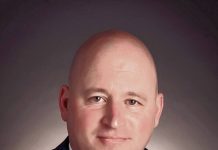Bob Garton, who knows a thing or two about Indiana politics, has come across an interesting factoid relating to Mike Pence’s soon-to-be status as vice president of the United States.
By virtue of his role as the No. 2 man on the winning Republican ticket headed by Donald Trump, Pence, a Columbus native, is set to become the sixth Hoosier to serve as vice president. At first blush that might not seem to be something for the history books save for the fact that only one other state, New York, has had more vice presidents.
Bob, a Bartholomew County Republican who holds a few political records of his own (the most notable being his 26 years as president pro tem of the Indiana Senate) came up with another vice presidential factoid that also hits close to home.
“If State Road 9 had been moved a few miles, Mike Pence would have become the fourth vice president to have lived on that highway,” he said.
While the latter might seem to be an ideal marketing tool for Indiana’s Department of Tourism — think in terms of future road signs like “Indiana 9 – Avenue of the Vice Presidents” — it’s important to keep in mind that we’re talking about a position that one of its past holders described as “not being worth a quart of warm spit.”
To be fair, recent occupants of the position have elevated its importance by playing key roles in the administrations in which they served, and at least one was rumored to be calling the shots for major decisions attributed to the man who put him in the job.
Pence himself is described by many pundits as acting in a similar capacity as the Trump administration transitions into office and is actually heading the transition effort. In fact, it can be argued that he is by far more influential than any of the five other Indiana vice presidents.
Looking back through the history of Indiana vice presidents, so much time has passed that none of them can be considered as household names except to dedicated political historians. Considered from the perspective of the times in which they served, a number, however, can be looked upon as important figures.
In chronological order they were:
SCHUYLER COLFAX JR. (17th vice president): Colfax was actually born in New York City but moved to Indiana when he was a teenager. He was a journalist and businessman who was elected to the U.S. House of Representatives in 1855. He has the rare distinction of being one of only two men who served as speaker of the House and vice president (John Nance Garner, who coined the “warm spit” description was the other). He ran on the ticket with Ulysses Grant in 1868. Thinking that Grant would serve only one term and harboring ambitions for the White House himself, he announced that he would not seek a second vice presidential term. As it turned out, Grant did elect to run for re-election but with another running mate. Colfax became a victim of political scandal after an 1873 congressional investigation revealed that he had received payments of cash and discounted stock from the Union Pacific Railroad in exchange for favorable action during the construction of the first Transcontinental Railroad. He died in Minnesota in 1885 while changing trains on his way to a speaking engagement in Iowa.
THOMAS HENDRICKS (21st vice president): Another transplant (he was born in Ohio), Hendricks set a political course remarkably similar to that followed by Pence. He served in the U.S. House of Representatives and eventually became governor of the state. As a private attorney in Shelbyville, he established a law firm that eventually evolved into Baker and Daniels, one of the most influential in the state. His first bid for the vice presidency was in 1876 when he ran on a ticket headed by Samuel Tilden. They won the popular vote but lost in the Electoral College. Eight years later, he was chosen to run as Grover Cleveland’s running mate, and the pair won the election, but Hendricks served only eight months in that position. He died in 1885 in Indianapolis.
CHARLES FAIRBANKS (26th vice president): Fairbanks was born and raised in Ohio, moving to Indiana after graduating from law school. He was elected to the U.S Senate in 1897 after having delivered the keynote address at the Republican convention that nominated William McKinley for president. In 1904, he was elected vice president on a ticket headed by Theodore Roosevelt. Because he had opposed Roosevelt’s “Square Deal” program, among other things, he was given few assignments and at the end of Roosevelt’s first term was replaced by William Howard Taft. He was not done with the vice presidential job. In 1916, after failing to win the Republican presidential nomination, he was selected as the running mate of Charles Evans Hughes. That ticket was narrowly defeated by incumbent President Woodrow Wilson. He died in 1918 in Indianapolis.
THOMAS RILEY MARSHALL (28th vice president): Marshall and Fairbanks had certain political similarities. Marshall, who had been governor of the state, was selected by Woodrow Wilson as his running mate during his first run for office in 1912. He would go on to serve in that role in both of the Wilson administrations but was kept at arm’s length by Wilson, who did not appreciate the Hoosier’s sense of humor. During his second term, Wilson was incapacitated by a stroke, a fact kept not only from the public but from Marshall by Wilson’s wife, Edith. When he did become aware of the situation, he was urged to become acting president, but he refused for fear of setting a precedent. He died on a trip after suffering a heart attack in 1925.
JAMES DANFORTH QUAYLE (44th vice president): The son of a newspaper executive in Huntington, Dan Quayle quickly acquired the political bug. After starting an Indianapolis law firm with his wife, Marilyn, he became one of the youngest people elected to Congress, winning a bid for the U.S. House of Representatives in 1976 at age 29. Four years later he won a Senate seat. In 1988, Vice President George H.W. Bush shocked the political establishment when he chose Quayle to be his running mate in his presidential bid. Despite some early missteps involving his spelling of the word potato and a poor debate performance against Sen. Lloyd Bentsen, Quayle endured and was part of the winning ticket. He served all four years of his term and was again chosen by Bush to be his running mate in 1992, but they were defeated by Bill Clinton and Al Gore. He sought the presidential nomination in 2000 but later conceded to eventual winner George W. Bush. He currently resides in Arizona.
The three Pence predecessors who claimed State Road 9 as their home highway were Hendricks (who lived in Shelbyville), Marshall (Columbia City) and Quayle (Huntington). I suppose that since State Road 9 does cross into part of Bartholomew County, Pence can qualify as the fourth member of a quartet.
Somehow or other, I suspect he has other things on his mind these days.
Harry McCawley is the former associate editor of The Republic. He can be reached at [email protected].




